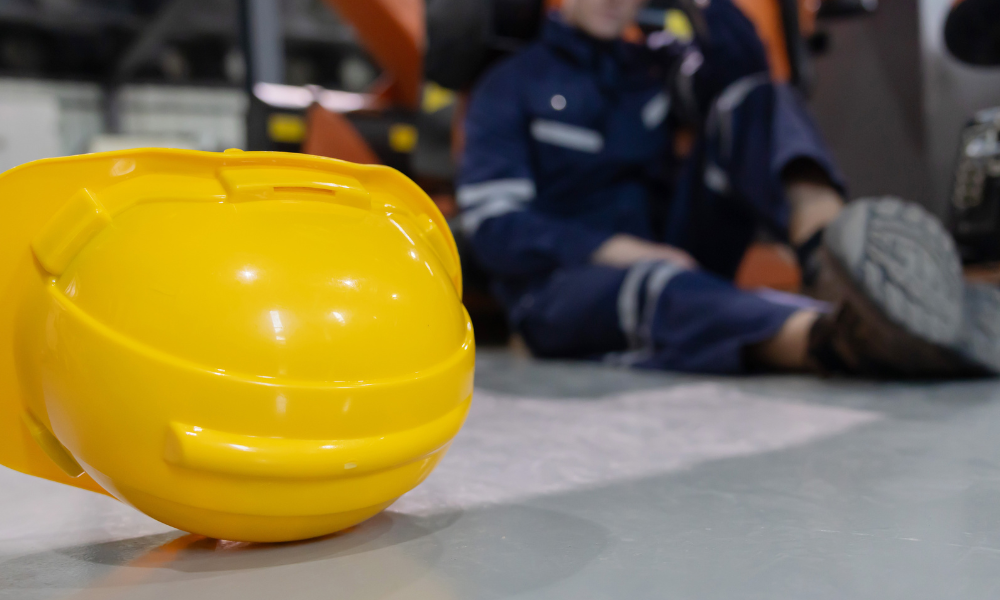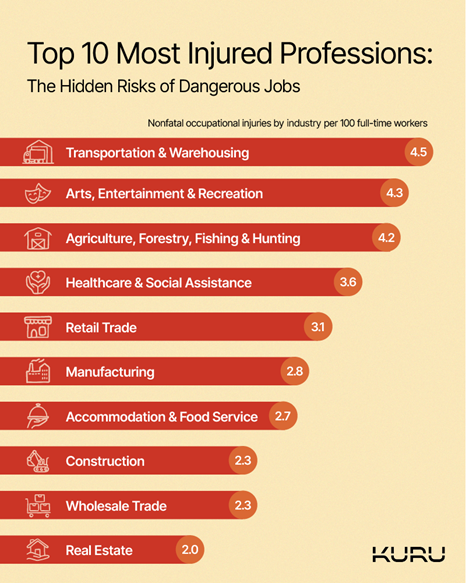List highlights top ten sectors by non-fatal injuries per 100 full-time workers

A new study by Kuru Footwear is drawing attention for its unexpected findings—and for a misleading title. While billed as the “Top 10 Most Dangerous Jobs in 2025 in the US,” the report actually examines which industries see the highest rates of non-fatal workplace injuries, not overall job danger or fatalities.
Digging into the data
Kuru Footwear analyzed data from the U.S. Bureau of Labor Statistics, focusing specifically on non-fatal injuries. “We wanted to look at just non-fatal—so people getting injured on the job, which industries have the highest rates of people getting hurt,” explains Victoria Schmid, spokesperson for Kuru Footwear.
Transportation and warehousing top the list, with nearly five in every 100 full-time workers experiencing a non-fatal injury each year. Schmid notes, “That is no surprise to anyone, with there being just a high rate of cases and a high rate of incidences.”
The second spot, however, is more unexpected. “The most interesting thing, I think, about the data, was that number two was the arts, entertainment and recreation… the reason that is so high is because it includes amusement parks,” says Schmid.
Agriculture, including farming, hunting, and fishing, rounds out the top three. “No surprise with hunting and farming, obviously a very hands-on industry. You’re around a lot of machinery, the same as transportation and warehousing, just a lot of heavy-duty machinery being used,” she adds.

Surprises and safety lessons
Construction, often assumed to be among the most dangerous sectors, appears lower on the list. “To see construction lower is definitely surprising. It’s got almost half the incidence rate of transportation and warehousing in number one,” Schmid observes, speculating that stricter safety regulations may be making a difference.
At the other end of the spectrum, office-based sectors like finance and insurance report the lowest rates of non-fatal injuries.
Why footwear matters
Kuru Footwear’s interest in workplace injury trends is rooted in its customer base, which includes many workers in physically demanding jobs. “We make shoes for nurses. We make shoes for a lot of warehouse workers—a big part of our customer base. A lot of people on their feet all the time,” says Schmid.
She emphasizes the importance of proper footwear for workplace safety: “Footwear and what you wear at work is always important, to keep your feet safe, to keep yourself safe so you’re not slipping, having injuries.”
Canadian perspective
While the study focuses on the U.S., Schmid sees value in cross-border comparisons. “It would be interesting to compare the industries in the US versus the industries in Canada that have highest rates of injuries in the workplace,” she says.
For Canadian health and safety professionals, the study is a reminder that the sectors with the most injuries may not always be the ones you expect—and that sometimes, the best prevention starts from the ground up.




